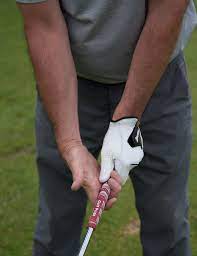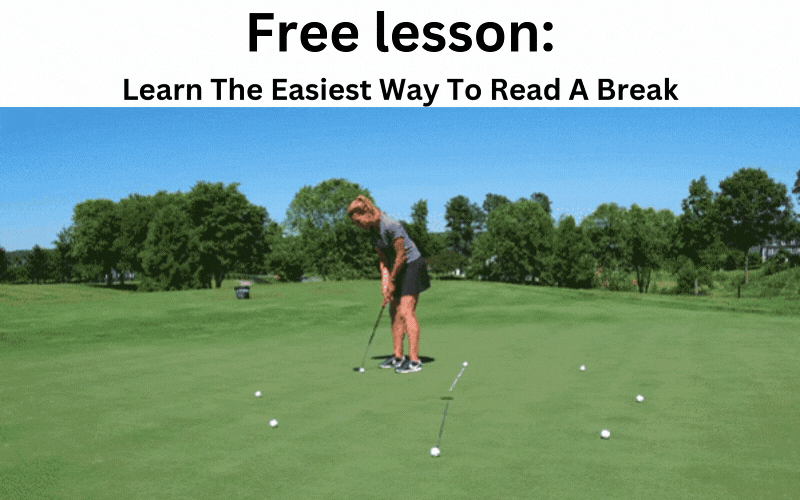
Introduction
The grip is the golfer's only connection to the golf club, making it a critical factor in the outcome of their swing. Regardless of the golfer's level, understanding the grip's fundamentals is a cornerstone to achieving consistency and success in golf.
A small tweak in how you hold the club can lead to substantial changes in your ball's trajectory and spin, thereby influencing your entire game. In this comprehensive guide, we focus on one of the most common grip styles used and often misunderstood by golfers - the weak golf grip.
Definition of a Weak Golf Grip
Let's set the stage by defining a weak golf grip. This phrase might lead you to think it has something to do with the firmness of the grip. However, in golf terminology, a weak grip refers not to how hard you're holding the club, but rather the position of your hands on the handle.
For a right-handed golfer, a weak grip is when the left hand is turned towards the target at address, leaving fewer than two knuckles visible, and the "V" is created by the thumb and forefinger pointing towards the right shoulder. For left-handers, it's the exact opposite.
Weak Golf Grip vs. Strong Golf Grip vs. Neutral Golf Grip
The discussion of a weak golf grip isn't complete without mentioning the other grip types. A golfer's hands can adopt three grip styles: weak, strong, or neutral, each distinguished by the position of the hands on the club handle.
In a strong grip, for a right-handed golfer, the left hand is rotated right (away from the target) so that more than two knuckles are visible at the address, and the "V" is aiming at the right shoulder or even right of it.
A neutral grip sits between these two extremes. You should be able to see two knuckles on your left hand at the address, and the "V" points roughly towards the chin or right shoulder.
The Effects of a Weak Golf Grip
The placement of your hands on the golf club significantly influences the clubface's orientation at the point of impact and, in turn, your ball flight.
In the context of golf swing mechanics, a weak golf grip tends to open the clubface during the swing, which means the clubface is aimed right of the target at impact (for right-handed golfers). This can lead to a fade or a slice – shots that curve to the right.
Pros and Cons of a Weak Golf Grip
Every grip style comes with its own benefits and drawbacks, and the weak golf grip is no exception. One advantage of a weak golf grip is that it offers better control over the clubface, which can be beneficial for executing shots that require precision, such as a deliberate fade or when playing in strong winds.
However, a weak grip also has its downsides. It may restrict wrist motion, potentially limiting the power and distance of your shots. Moreover, if you struggle with a slice due to an open clubface, a weak grip could exacerbate this issue, as it naturally tends to open the clubface even more.
Recognizing a Weak Golf Grip
If you've been facing unexplained challenges with your shots, your grip could be the culprit. It's crucial to recognize your grip type to rectify any potential issues.
For a right-handed golfer, if you see less than two knuckles of your left hand when addressing the ball, and the "V" shape created by the thumb and forefinger points towards the right shoulder, you are using a weak grip.
How to Correct a Weak Golf Grip
If a weak grip is causing you problems on the course, you might want to consider
correcting it. Here's how you can adjust from a weak grip to a more neutral or strong grip:
Start by holding your club at waist height. Rotate your left hand (for right-handed golfers) clockwise around the handle until you can see two or even three knuckles. Ensure that the "V" formed by your thumb and forefinger is now pointing towards your right shoulder, or somewhere between your chin and right shoulder for a neutral grip.
Bear in mind that changing your grip can feel uncomfortable initially. However, practice is key to making this new grip feel more natural. Consider using golf grip training aids to help you get accustomed to the new hand position. In addition to practice, feedback is also crucial.
Therefore, it might be helpful to record your swings or get feedback from a coach to ensure that you're making the correct adjustments.
The Role of a Weak Golf Grip in the Golf Swing
The grip plays a fundamental role in your golf swing, and a weak golf grip can significantly influence your swing mechanics and the resulting ball flight. Since a weak grip tends to open the clubface during the swing, it can cause the ball to start to the right of the target line and curve further right (for right-handed golfers) during flight.
This is known as a fade or a slice, depending on the severity of the curve.
Understanding the relationship between your golf grip and wrist position can be beneficial for managing the effects of a weak grip. A proper wrist hinge can help compensate for the naturally open clubface in a weak grip and allow for a squarer impact, improving the direction and trajectory of your shots.
Images and Video Tutorials
To truly grasp what a weak golf grip looks like and how to correct it, visual aids can be of immense help. Images and video tutorials can provide clear demonstrations of different grip styles and offer step-by-step guidance on adjusting your grip.
They can walk you through each stage of the grip change, from how to place your hands on the club initially, through to the finished grip. This can be particularly useful for beginners who are still finding their way around golf fundamentals.
Common Myths about Weak Golf Grip
In the world of golf, there's no shortage of advice and opinions, leading to the spread of several myths about weak golf grips. A common misconception is that weak grips are ideal for beginners.
While a weak grip might initially help novices avoid hooking the ball (a common beginner's mistake), it can lead to other problems down the line, such as encouraging a slice or limiting power. It's crucial, therefore, for beginners to transition towards a more neutral or slightly strong grip as they gain comfort and experience on the golf course.
Additional Considerations: Grip Size and Pressure
While we've discussed the positioning of hands extensively, two other factors that could affect your grip and overall performance are grip size and grip pressure. Golf grip size is determined by the diameter of the grip's butt end.
Using a grip that's either too large or too small for your hand can lead to loss of control and inconsistency in your shots. It's important to find the right grip size that allows you to hold the club comfortably and securely.
Grip pressure is equally crucial. It's a balancing act - grip the club too tightly, and you risk creating tension in your arms and shoulders, reducing swing speed and flexibility. Grip it too loosely, and you might not have the control needed for accurate shots.
A good rule of thumb is to grip the club firmly enough to maintain control but relaxed enough to allow the wrists to hinge and unhinge freely during the swing.
Conclusion
Unraveling the intricacies of golf grip styles, particularly the weak golf grip, reveals the profound influence they have on your swing and the resulting ball flight.
Recognizing the impact of a weak grip on your game and understanding its benefits and limitations can provide you with valuable insights to elevate your performance on the course. Remember that while a weak grip can offer enhanced control and can be a tactical choice for specific shots, it may limit your power and promote a slice if not managed appropriately.
Choosing a grip style isn't a one-size-fits-all matter; it should be determined by your comfort level, physical capabilities, and the specific demands of your game. If you're a beginner, starting with a neutral grip is generally recommended. Then, as you gain experience, you can experiment with different grip styles to see what works best for you.
Remember, too, that grip size and pressure are integral parts of the equation. Ensuring your club's grip is the right size for your hands and applying an optimal amount of pressure when holding the club can lead to improved comfort, control, and consistency in your shots.
Ultimately, the road to mastering golf is paved with constant learning and practice. Changes to your grip or any other aspect of your game may feel unnatural at first, but perseverance will yield improvement over time. Consider seeking guidance from a golf professional or experienced coach who can provide personalized advice tailored to your playing style and goals.
So, keep exploring, stay patient, and enjoy the journey of improving your game. You'll find that understanding and applying the art and science of golf grips, be it weak, strong, or neutral, can indeed be a game-changer in your golfing journey.
